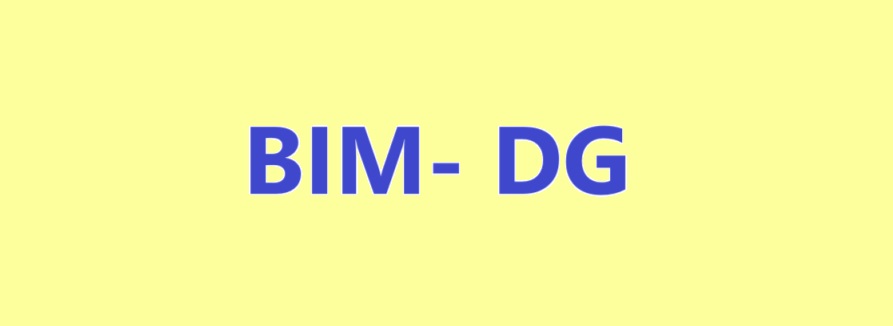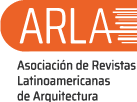Application of the Generative Design method in the construction sector within the framework of the sustainable Development Goals
DOI:
https://doi.org/10.51372/gacetatecnica261.5Keywords:
sustainable development goals, SDG, AEC, architecture engineering and construction, sustainability, building information modeling, BIM, generative designAbstract
The United Nations Organization since 2015, the Sustainable Development Goals have been proposed for global management, and specifically in the construction sector corresponding to objective 11, professionals in the architecture, engineering and construction sector have a crucial role in this context, given that it is responsible for the design, construction and maintenance of the built environment, which implies a significant impact on several sustainability indicators. However, it faces complex challenges, especially in countries like Venezuela, where multidisciplinary problems make it hard to gain progress towards these objectives. But it should be noted that progress in the use of digitalization and implementation of innovative technologies are seen as key solutions to improve sustainability in these areas. The use of tools such as Building Information Modeling and Generative Design is presented as a strategy to optimize architectural and structural design, allowing better integration of sustainability from the initial stages of projects. In this document, approached as a documentary-type investigation, it is concluded that the combination of BIM and DG can facilitate the creation of more efficient and sustainable design solutions, aligned with the Sustainable Development Goals, thus promoting a more responsible and sustainable built environment
Downloads
References
A. Gade y M. Madsen, “Early prioritization of the United Nation's goals for sustainable development in construction projects” IOP Conference Series: Earth and Environmental Science, 588. doi:10.1088/1755-1315/588/5/052054, 2020
R. Horry, C.A. et al., “Environmental management systems in the architectural, engineering and construction sectors: a roadmap to aid the delivery of the sustainable development goals”, Environ Dev Sustain 24, 10585–10615, doi:10.1007/s10668-021-01874-3, 2022
J Bernegger, et al., “A new method combining BIM and GIS data to optimise the sustainability of new construction projects in Switzerland” IOP Conference Series: Earth and Environmental Science, 1122 012052, doi:10.1088/1755-1315/1122/1/012052, 2022
P. Mansell, S. Philbin, T. Broyd y I. Nicholson, “Assessing the Impact of Infrastructure Projects on Global Sustainable Development Goals”, LONDON SOUTH BANK UNIVERSITY ICE Publishing. doi:10.1680/jensu.19.00044, 2019
A. Ammar, M. Hatoum, H. Nassereddine, y G. Dadi, “Synergies Between Construction 4.0 Technologies and Sustainable Construction: A Bibliometric Analysis” Conference: Creative Construction e-Conference, 365-370, doi:10.3311/CCC2022-046, 2022
C. Fagone, M. Santamicone, y V. Villa, “Architecture Engineering and Construction Industrial Framework for Circular Economy: Development of a Circular Construction Site Methodology”, Sustainability, 15, 1-23. doi:10.3390/su15031813, 2023
L. Ospina, et al., “Estimating networks of sustainable development goals” Information & Management, 59, 1-15. doi:10.1016/j.im.2020.103342, 2022
S. Goubran, y C. Cucuzzella, “Integrating the Sustainable Development Goals in Building Projects”. Journal of Sustainability Research, 1, 1-43, doi:10.20900/jsr20190010, 2019
S. Goubran, “On the Role of Construction in Achieving the SDGs”, Journal of Sustainability Research, 1, 1-52. doi:10.20900/jsr20190020, 2019
I. Bertin, et al. “A BIM-Based Framework and Databank for Reusing Load-Bearing Structural Elements”, Sustainability, 12, 1-24. doi:10.3390/su12083147, 2020
L. Pietrosemoli, C. Rodríguez, y Y. Nuñez, “Venezuela: Construction problems and sustainable construction. Collecting data to put the puzzle together. Part 1”, AdvBuildEdu, vol. 6, no. 1, pp. 63–79, doi:10.20868/abe.2022.1.4815, 2022
O. Kaplinski, “Architectural, Civil, and Infrastructure Engineering in View of Sustainability: Editor’s Comment”, Sustainability, 15, 1-7. doi:10.3390/su15075967, 2023
R. Jiao, J. Luo, J. Malmqvist, y J. Summers, “New design: opportunities for engineering design in an era of digital transformation”, Journal of engineering design, 33(10), 685–690. doi:10.1080/09544828.2022.2147270, 2022
Z. Alwan, et al., “Framework for parametric assessment of operational and embodied energy impacts utilizing BIM”, Journal of Building Engineering, 42, 1-15. doi: 10.1016/j.jobe.2021.102768, 2022
E. Frangedaki, et al., “Optimisation-driven design in the architectural, engineering and construction industry”, Proceedings of the Institution of Civil Engineers – Structures and Buildings, 1-12. doi:10.1680/jstbu.22.00032, 2022
R. Rooshdi, N. Ismail, S. Sahamir, y M. Marhani, “Integrative Assessment Framework of Building Information Modelling (BIM) and Sustainable Design for Green Highway Construction: A Review”, Chemical Engineering Transactions, 55-60. doi:10.3303/CET2189010, 2021
N. McGlashan, et al., “Sustainability Certification Systems as Goals in a Generative Design System”, Society for Modeling & Simulation International (SCS) (págs. 1-10). April 15-17: SimAUD, 2021
R. Yu, N. Gu, y M. Ostwald, “Architects’ Perceptions about Sustainable Design Practice and the Support Provided for This by Digital Tools: A Study in Australia”, Sustainability, 14, 1-18. doi:10.3390/su142113849, 2022
K. Patel, y R. Ruparathna, “Life cycle sustainability assessment of road infrastructure: a building information modeling-(BIM) based approach”, International Journal Of Construction Management, 1-10. doi:10.1080/15623599.2021.2017113, 2021
N. Kallioras y N. Lagaros, “MLGen: Generative Design Framework Based on Machine Learning and Topology Optimization” Appl. Sci, 11, 1-17. doi:10.3390/app112412044, 2021
UNESCO, “UNESCO Publications”, UNESCO Publications, Disponible en: https://unesdoc.unesco.org/ark:/48223/pf0000380063, 2021
A. Klarin y Q. Xiao, “Automation in architecture, engineering and construction: a scientometric analysis and implications for management”, Engineering, Construction and Architectural Management, doi:10.1108/ECAM-08-2022-0770, 2023
V. Tomei, et al., “Generative design of mega-structures: A structural grammar approach”, Structures and Architecture, 1169-1179. doi:10.1201/9781003023555-140, 2022
G. Bastos, et al., “Interoperability between Building Information Modelling (BIM) and Building Energy Model (BEM)” Appl. Sci, 11, 1-20. doi:10.3390/app11052167, 2021
N. Korqa, “Generative design for BIM Its Influence in the Design Process”, Tecnico Lisboa, Disponible en https://fenix.tecnico.ulisboa.pt/downloadFile/563345090414087/ExtendedAbstract.pdf, 2015
L. Quispe, “Application of BIM Tools in Parametric and Generative Design for the Conception of Complex Structures”, IOP Conf. Series: Materials Science and Engineering, 1-11. doi:10.1088/1757-899X/1203/2/022070, 2021
S. Pibal, K. Khoss, y I. Kovacic, “Framework of an algorithm-aided BIM approach for modular residential building information models”, International Journal of Architectural Computing, 20(4), 777–800. doi:10.1177/14780771221138320, 2022
C. Sydora y E. Stroulia, “Poster Abstract: Generative Interior Design using BIM”, Proceedings of The 6th ACM International Conference on Systems for Energy-Efficient Buildings, Cities, and Transportation, New York, 354-355. doi:10.1145/3360322.3360997, 2019
P. Shrestha, et al., “Generative Design Approach For Product Development”, The 7th International Conference on Engineering, Applied Sciences and Technology, 1-9. doi:10.1063/5.0065031, 2021
S. Abrishami, et al., “Generative BIM workspace for AEC conceptual design automation: prototype development” Engineering, Construction and Architectural Management, doi:10.1108/ECAM-04-2020-0256, 2020
J. Mukkavaara y M. Sandberg, “Architectural Design Exploration Using Generative Design: Framework Development and Case Study of a Residential Block”, Buildings, 10, 1-17. doi:10.3390/buildings10110201, 2020
I. Caetano, L. Santos, y A. Leitao, “Computational design in architecture: Defining parametric, generative, and algorithmic design”, Frontiers of Architectural Research, 9, 287-300. doi: 10.1016/j.foar.2019.12.008, 2019
D. Sedzicki, et al., “Computer-Aided Automated Greenery Design—Towards a Green BIM”, Sustainability, 14, 1-20. doi:10.3390/su14148927, 2022
S. BuHamdan, A. Alwisy, y A. Bouferguene, “Generative systems in the architecture, engineering and construction industry: A systematic review and análisis”, International Journal of Architectural Computing, 1-24. doi:10.1177/147807712093412, 2020
I. Paduano, A. Mileto, y E. Lofrano, “A Perspective on AI-Based Image Analysis and Utilization Technologies in Building Engineering: Recent Developments and New Directions”, Buildings, 13, 1-15. doi:10.3390/buildings13051198, 2023
G. Acosta, J. Alcaide, y J. Diego, “Evolution and future trends in generative product design”, Proceedings of DARCH 2022 2nd International Conference on Architecture & Design, 74-85, Disponible en: https://www.ocerints.org/darch22_e-publication/papers/Gonzalo%20Acosta%20Zazueta2.pdf, 2022
Mukkavaara, J. (2021). Exploration and Optimization of Building Design Solutions using Computational Design. Luleå: Luleå University of Technology, Department of Civil, Environmental and Natural Resources Engineering. Obtenido de www.ltu.se/shb
S. Abrishami, et al., “Virtual Generative BIM Workspace for Maximising AEC Conceptual Design Innovation: A Paradigm of Future Opportunities” Construction Innovation, 15(1), doi:10.1108/CI-07-2014-0036, 2015
ANSI/AISC 360-10, “Especificación ANSI/AISC 360-10 para Construcciones de Acero”, Basado en “Specification for Structural Steel Buildings” (estándar nacional estadounidense ANSI/AISC 360-10), American Institute of Steel Construction (AISC), Chile, 2010
Green Building Council, “LEED Reference Guide for Building Design and Construction”, V4 Textbook Binding, U.S. Green Building Council, 2013
K. Deb et al., “A fast and elitist multiobjective genetic algorithm: NSGA-II”, Technical report, Indian Institute of Technology, Kanpur: Kanpur Genetic Algorithms Laboratory (KanGAL), Vol 15, 2000
R. Pérez, “Construcción 4.0 y sus cuatro pilares tecnológicos fundamentales”, Blog de Hiberus, Disponible en: https://www.hiberus.com/crecemos-contigo/construccion-4-0-y-sus-cuatro-pilares-tecnologicos-fundamentales/, 2020

Published
How to Cite
Issue
Section

This work is licensed under a Creative Commons Attribution-NonCommercial-ShareAlike 4.0 International License.
The opinions expressed by the authors do not necessarily reflect the position of the editor of the publication or UCLA. The total or partial reproduction of the texts published here is authorized, provided that the complete source and electronic address of this journal is cited. Authors have the right to use their articles for any purpose as long as it is done nonprofit. The authors can post on the internet or any other media the final approved version of their work.






.png)




